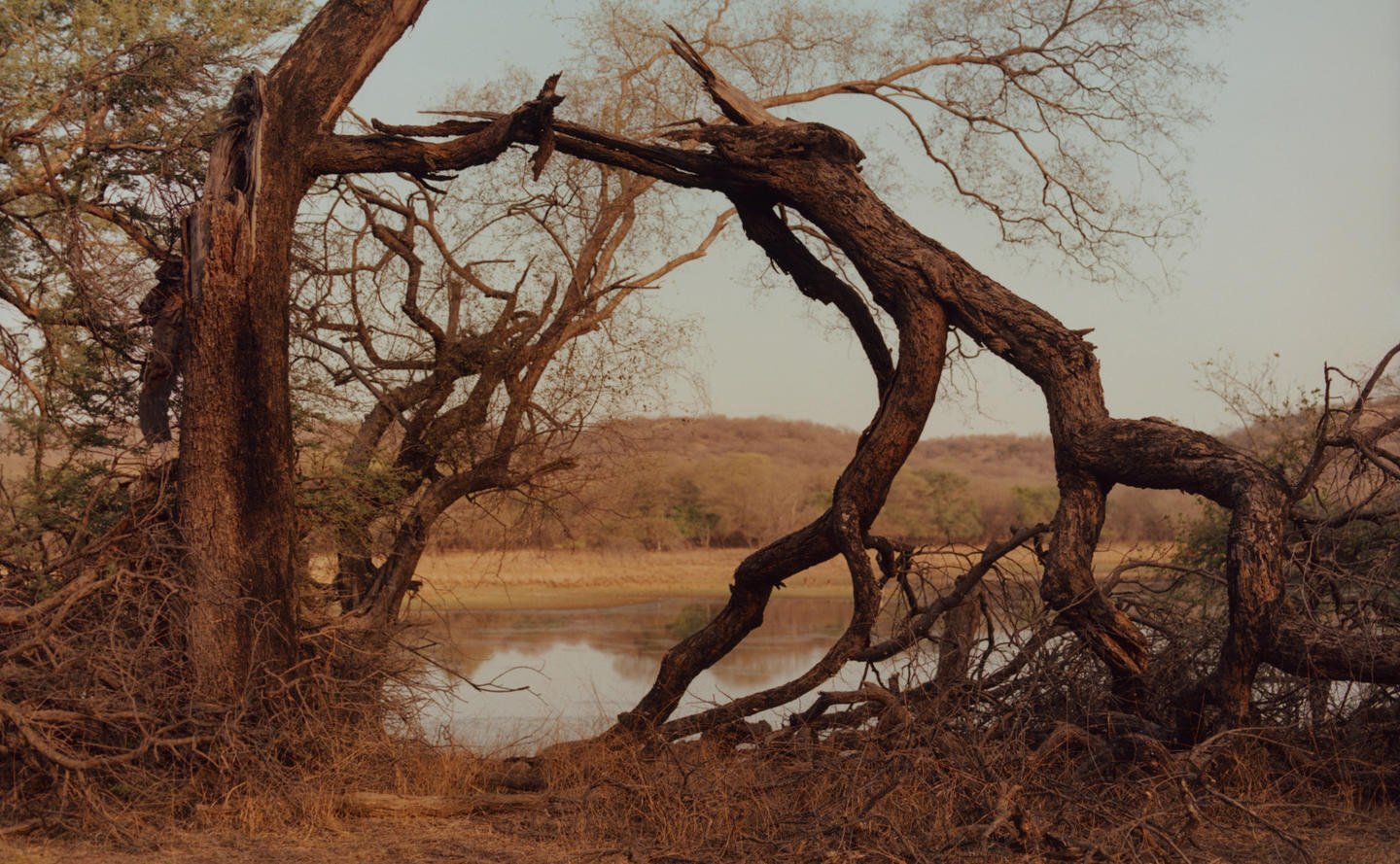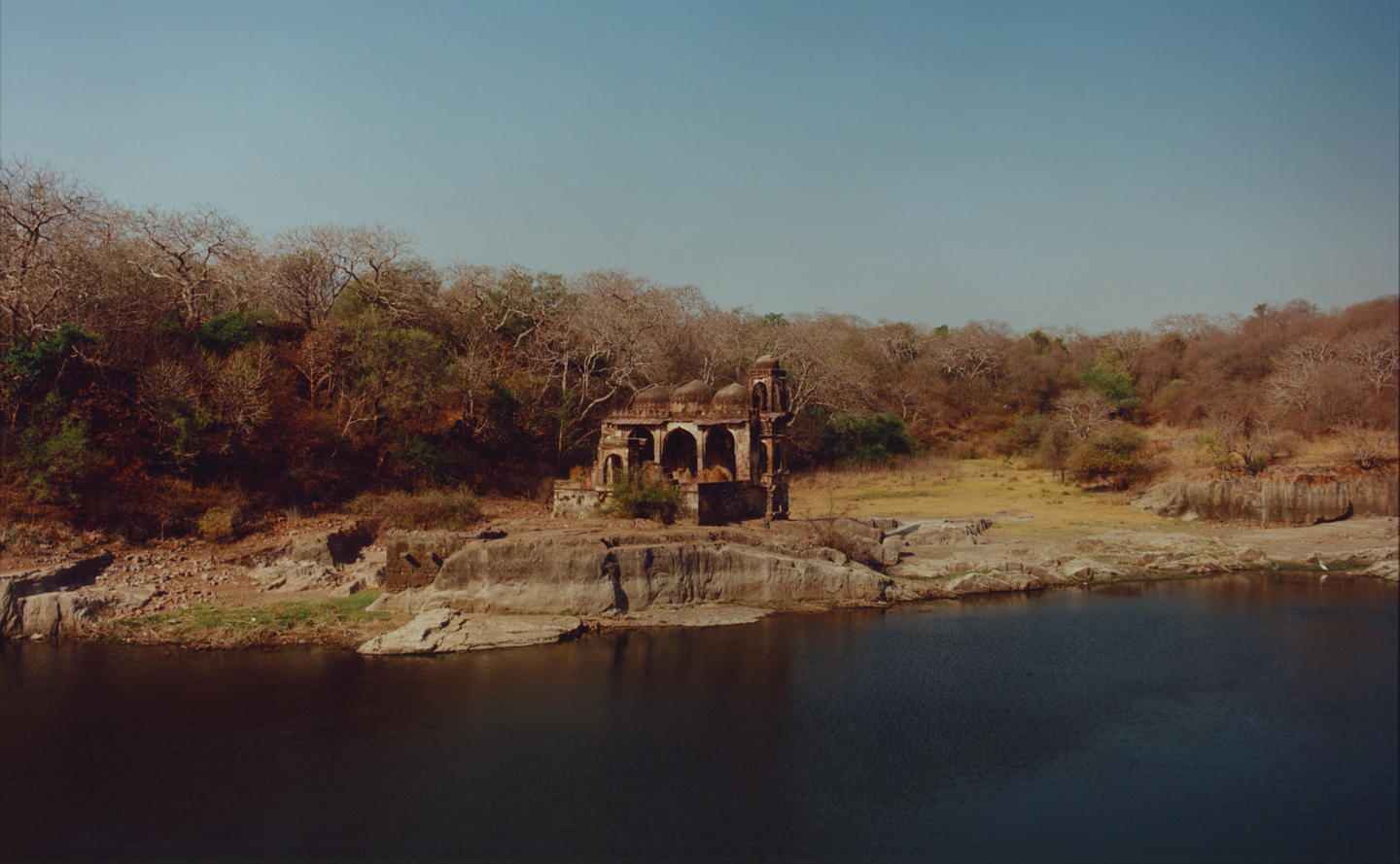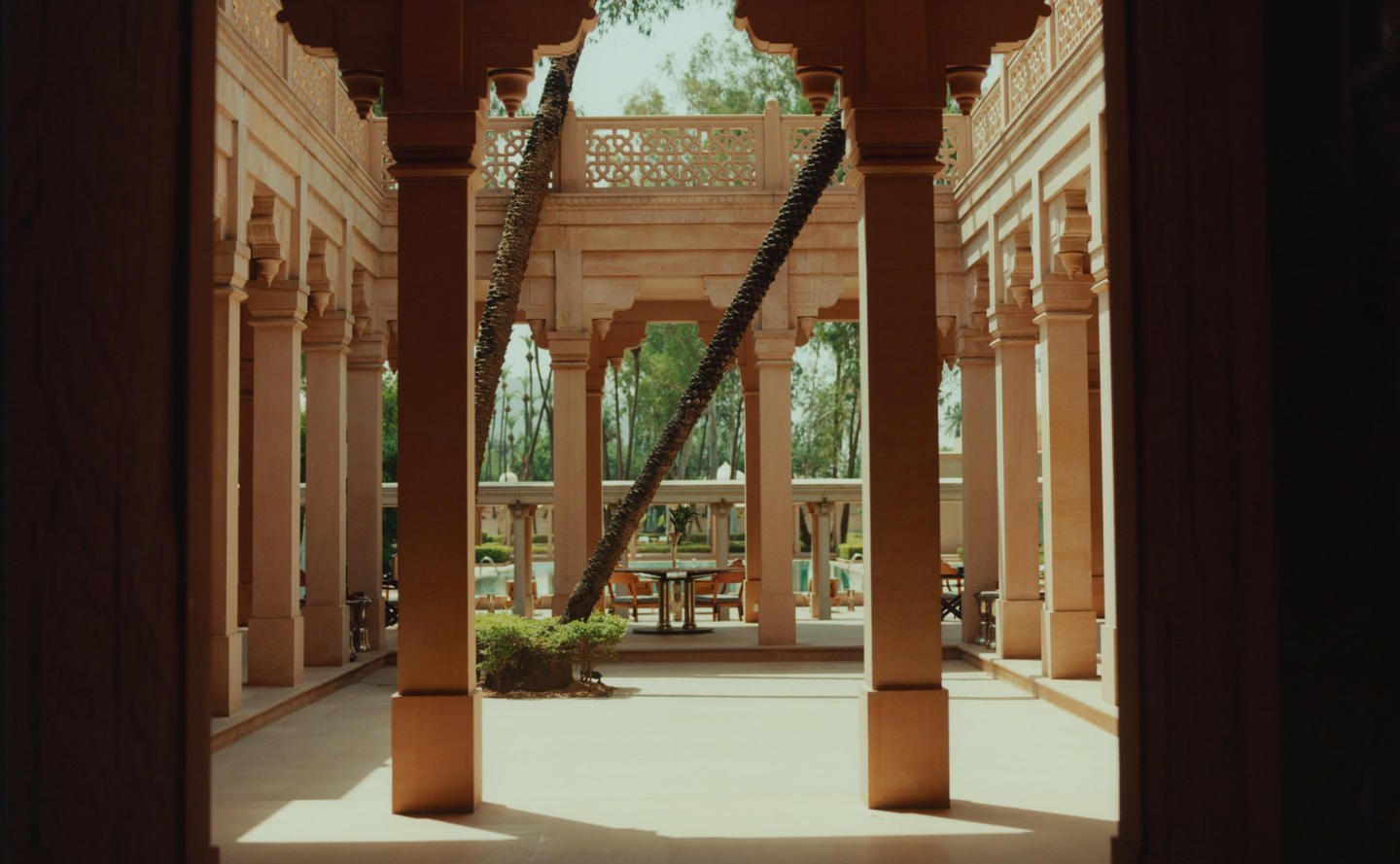Aman과 함께 축제 시즌을 만끽하세요
축제의 경이로움이 가득한 계절에 빠져보세요. 일정을 살펴보고 여정을 시작하세요.
Photography by Bharat Sikka
Words by Bandana Tewari
Amanbagh & Aman-i-Khas, India
In the late-April heatwave last spring, we left the pearly tents of Aman-i-Khás at the crack of dawn for the Ranthambore Tiger Reserve. We drove stealthy in a camouflage Mahindra jeep, assisted by two safari guides, in crisp khaki uniforms. Fresh pugmarks, lashed by the desert winds blowing from the west, dissipate as quickly as we find them. All around us, crunchy leaves collapse on parched ground like confetti. The sizzling expanse, like a lush carpet harmoniously dissolving into the sands of Rajasthan.

The indigenous Dhok, always in our vision, not only survives in this rough terrain, it thrives. This sun-loving deciduous tree sparks the imagination. Hundreds of sinewy trunks–sheathed with golden sands journeyed from the nearby Thar Desert–spread their limbs like streaks of lightning against the sky. The Dhok is an extraordinary survivor. It has deep meandering roots, with such fascinating water-holding capacity, that with a single burst of desert shower the undulating hills and valleys become lush and verdant, like evergreen forests. The fecundity of soil and water reminds us that nature simply happens, fruits of the cosmic in-breath and out-breath, bloom and decay, an endless existential rhythm.
Our Aman safari guides understand the intricacy of the web of life. To be sons of the soil, they say, is to honour the inextricable dependence between man and this wilderness. This place reminds me of a Zen Buddhist truism: I don’t stand on the land; I am the land. The biodiversity of life is sacrosanct to the locals. For them, there is no us and them. This non-duality of life rooted in the philosophy of Advaita Vedanata, one of the oldest in India and based on the concept that the true Self is identical to Absolute Reality. This places empathy at the heart of their practice of nature worship.
"The fecundity of soil and water reminds us that nature simply happens, fruits of the cosmic in-breath and out-breath, bloom and decay, an endless existential rhythm."


In village after village, we observe that necessity is indeed the mother of invention. Jugaad, or finding inventive solutions with existing materials and resources, is a popular tactic in rural India. Any excess is recycled and rejuvenated to give new forms of life and function. Old saris are cut and embroidered or embellished to make colourful dupattas or scarves seen on festival merrymakers. Cows and goats graze in the very space their children play cricket; households use cow dung as pesticide, fertiliser and fuel for their earthen stoves. These common everyday practices of frugality are seldom seen in urban cities. The mantra here is doing more with less.
As far as the eyes can see, the landscape is dotted with the ruins of magnificent civilizations. Mountains laced with meandering forts provided kings a perfect vantage point; and watering holes at the base, a refuge of temples and havelis (traditional Indian townhouses) for poets and courtesans alike. The ingenuity of human endeavour is palpable everywhere. At the Ranthambore Fort, a cornucopia of architectural feats — palaces, stepwells, temples, pavilions and cenotaphs — stand testimony to the creativity of artisans and the vision of their rulers.

"When we return to our tents, it is an invitation to pause, to find equanimity with our surroundings."


Driving back and forth from Aman-i-Khás, in search of the Bengal Tiger, is not a play of cat and mouse. It is in fact, an invitation to pause and observe, to slow down the chase, to acknowledge the futility of speed. “If the pond of the mind is still, the beautiful moon will reflect on it,” said Thich Nhat Hanh, the profound Vietnamese monk, about slowing down the precipitancy of our lives. Waiting with mindfulness is to drift into a daydream of Now, when the hushed anticipation is not simply for Shere Khan, but to the sounds that make the tiger come alive in our imagination: distant warning calls of cantankerous monkeys, screeching birds or the rustle of Sambar deer fleeing from predators. When we return to our tents, it is an invitation to pause, to find equanimity with our surroundings.


The next day we spot a fresh imprint of a tiger paw and our hearts race. But this lead dissipates under a sudden burst of desert shower. We are now overwhelmed by the ‘smell’ of rain– earthy, musky and fresh. With this unique soil-fragrance, the slumberous terrain awakens. Raindrops glisten peacock feathers into spectacular iridescence, spotted hides of chitals nearby become dewy and lustrous; and oh my, the crocodiles, suddenly vigilant for prey in their menacing beauty against a slushy marshland. The operatic power of nature is in full display.



Sand, soil and skin all browned by the Rajasthan sun, against which ochre and mustard drapes shield women from the blazing sun, and school children in nut-brown uniforms, atop tinkling bicycles, merge with the amber sunset. And from this earthiness Amanbagh, the ‘garden of peace’, rises like a pink phoenix amidst a lush herbage of date palms and bougainvillaea. All around this Mugalesque beauty, you can spot the 17th-century city ruins of Bhangarh and Ajabgarh Fort. Not far are the wilds of Sariska Tiger Reserve, once the personal hunting ground of the Maharaja of Alwar, where perhaps our Shere Khan will finally appear.
"Amanbagh, the ‘garden of peace’, rises like a pink phoenix amidst a lush herbage of date palms and bougainvillaea."
Driving at dusk to have dinner under a Chhatri, whose oxidised dome shimmers against the night sky, Rambabu Meena, or Rambo for short, who has worked with Amanbagh for 16 years tells the tale of the haunted Bhangarh Fort. The magic of folklore in the landscape is palpable here. The thrill mixed with trepidation as you walk past ruins of bazaars in Bhangarh Fort, (which, according to hearsay, comes alive on certain nights with the ghosts of the past), not only adds to the enigma, but helps in the preservation of this ancient ruin.
As a delicious thali of local Rajasthani fare arrives at our table, foraged from the surrounding forests and farms, we wonder, can the forests of Rajasthan teach us spiritual sustainability? It seems obvious that they can. Drawings of the Hindu symbol, Om, appear on walls and paintings in most villages. The wisdom within these symbols is succinctly delivered in a Vedic chant: Tat Tvam Asi or “You are That.” You are the land that you stand on. You are both the mirror and the reflection of All That Is. You are both the one looking, and that which you are looking at. You're not in the universe, the universe is you.
This daydreaming takes us into spiritual wellbeing while we wait for Shere Khan.


It’s spring in India when writer Bandana Tewari and photographer Bharat Sikka travel to Amanbagh and Aman-i-Khás. On their journey through rural Rajasthan, they patiently await an appearance of the majestic Bengal tiger, all the while observing the abundance of nature, history and spirituality - three elements at interplay that guide the way of local life.
Indian photographer Bharat Sikka studied photography at the Parsons School of Design in New York City, where he developed his passion for capturing the cultural contradictions of a fast-changing India. Questioning conventional perspectives while playing with notions of subjectivity and intimacy, his work has been featured in international exhibitions and publications such as The New York Times, i-D and Wall Street Journal.
With a bachelor’s degree in literature and master's degree in communications and filmmaking, award-winning journalist Bandana Tewari began her career contributing to international fashion publications. For 13 years, she reported on the socio-political role of fashion as editor-at-large of Vogue India, until stepping down to focus on advocating for change within the industry as an advisor to the Global Fashion Agenda. Bandana is a member of BOF 500 and a contributor to The New York Times, The International Herald Tribune and Vogue.